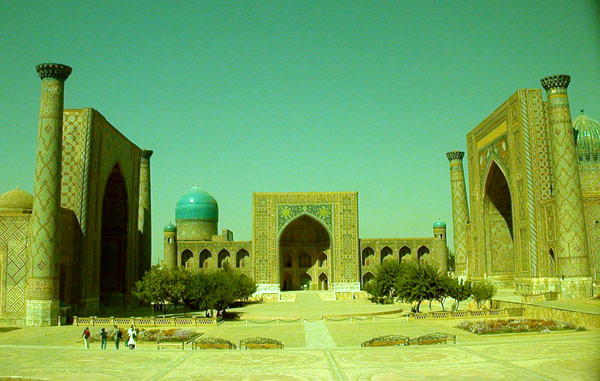Registan in Samarkand

Registan in Samarkand is the monument of town-planning art of Central Asia of 15-17 centuries. It is the city square ensemble, during the rule of
Timurid dynasty it was the main square of Samarkand. The development of existing ensemble was started in 17-th century. Registan includes three madrasahs with the rich mosaic decor, carved ceramic and marble decor. From the west the Ulugh Beg Madrasah is located (1417-20; 2 minarets were straightened in 1932, 1965). From the east, in the town-planning technique, which called ‘Kosh’ (that means – in mirror reflexion) with the Ulugh Beg Madrasah, – the Sher-Dor Madrasah (‘The Tigers having’: 1619-1635/36, architect Abdul-Dzhabbar, paintings Mohammed Abbas Samarkandi, main restorations 1926, 1961). And from the north – the Tilya-Kori Madrasah (“Gilded”; 1646/47-1659/60; main restorations 1939, 1970-75).
Three Madrasahs of Registan in Samarkand are outstanding architectural monuments not only in the Central Asia, but also in the World architecture. The most refined of them is the Ulugh Beg Madrasah. It has embodied the architectural forms and methods, which have grown on the basis of ancient traditions of the Central Asian architecture, at the same time enriched by variety of achievements of the building technics and art of the adjacent countries. One can see there remarkable decorative glazed tilework, both in exterior and in interior of the building.